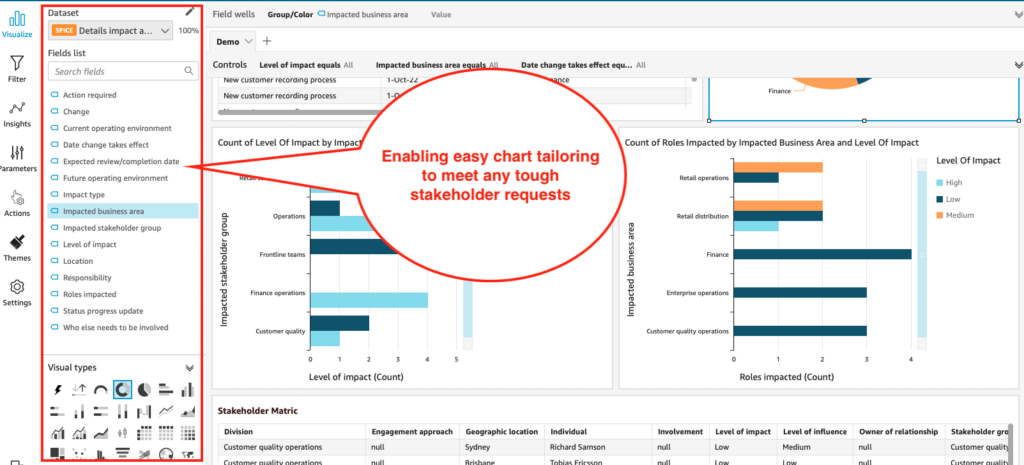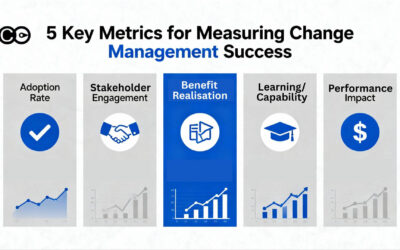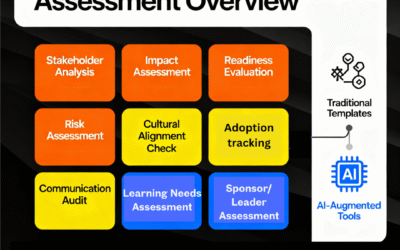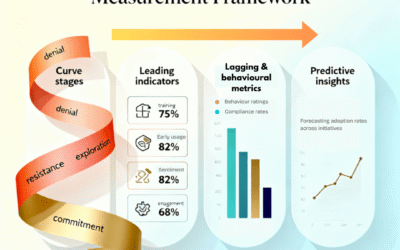As change practitioners, we often hear that Change is intangible and hard to measure – A key concern with change management metrics. As a result, the discipline is often perceived as less value-adding and less critical to the business and program performance. We work with technical, finance, process, and operations specialists who often do not get what we are on about.
In Michael Tushman’s Harvard Business Review article about change management he asserted that change management must become more data-driven to keep up with business demands. Otherwise, change management will no longer contribute critical value to the organisation that it should, and instead, risk being overlooked.
A typical scenario that Change practitioners often complain about is that they are in a typical project meeting where everyone is consumed with technical defects, testing data, project cost, and delivery resource requirements. From an analytics and reporting perspective, I often hear how hard it is to highlight and position the importance of Change data. But, as a part of Change delivery, we do produce various data to track progress. Why are we still not able to be at the centre of the table?
The problem is that most of the data we produce is data that is not positioned to link strongly to ultimate business outcomes. For example:
Employee feedback
Employee opinions are useful and insightful, however, this often reflects what stakeholders already suspected.
Change readiness surveys
Again, potentially useful and insightful. But, is agreeing to the statements in the survey equivalent to actual behavior change? (i.e. knowing vs doing) Does positive survey results guarantee business impact and full benefits realized.
Training completion rates
Training completion rates may be a minimum requirement to ensure the knowledge transfer has happened. However, will the behavior change? What is the impact on the operations?
What else to focus on measuring?
What we need is to focus on the critical business outcomes and be able to demonstrate how change management data provides leading indicators to:
1) the likelihood of realizing initiative benefits, and
2) impact on the business.
For example, if an organization is focused on improving customer experience, then we need to demonstrate how initiatives could impact their experience. Firstly, we need to work out to what extent the customer cares about the effects of the initiative, the magnitude of the impacts on customers, and whether the impacts are positive or negative (from the perspective of the customer).
With our understanding of employee and stakeholder readiness and adoption levels, these can be turned into the extent to which benefits may be realised. Any potential blockers in terms of adoption progress and sentiments may be utilised as an indication for benefit realisation.

In these ways, we have demonstrated the importance of managing change impacts over the timeline since any increase or decrease in customer experience could equate to hundreds of millions of dollars (according to Forrester research). Suddenly, we are now talking about top-line revenue impacts that will put us in the centre of attention. What has been your experience in linking change data to business results?
Here are some more articles on measuring change.
How to build change analytics capability






